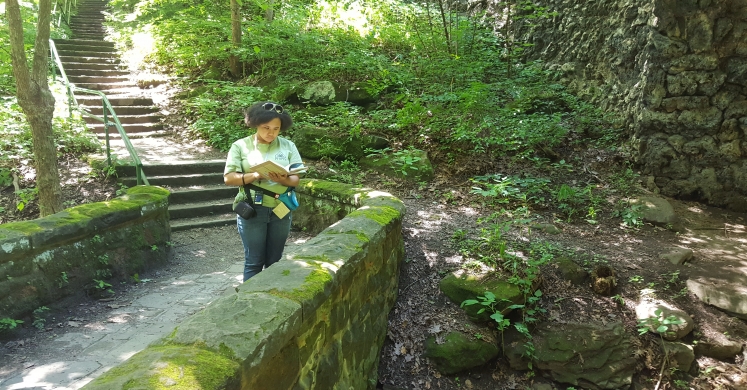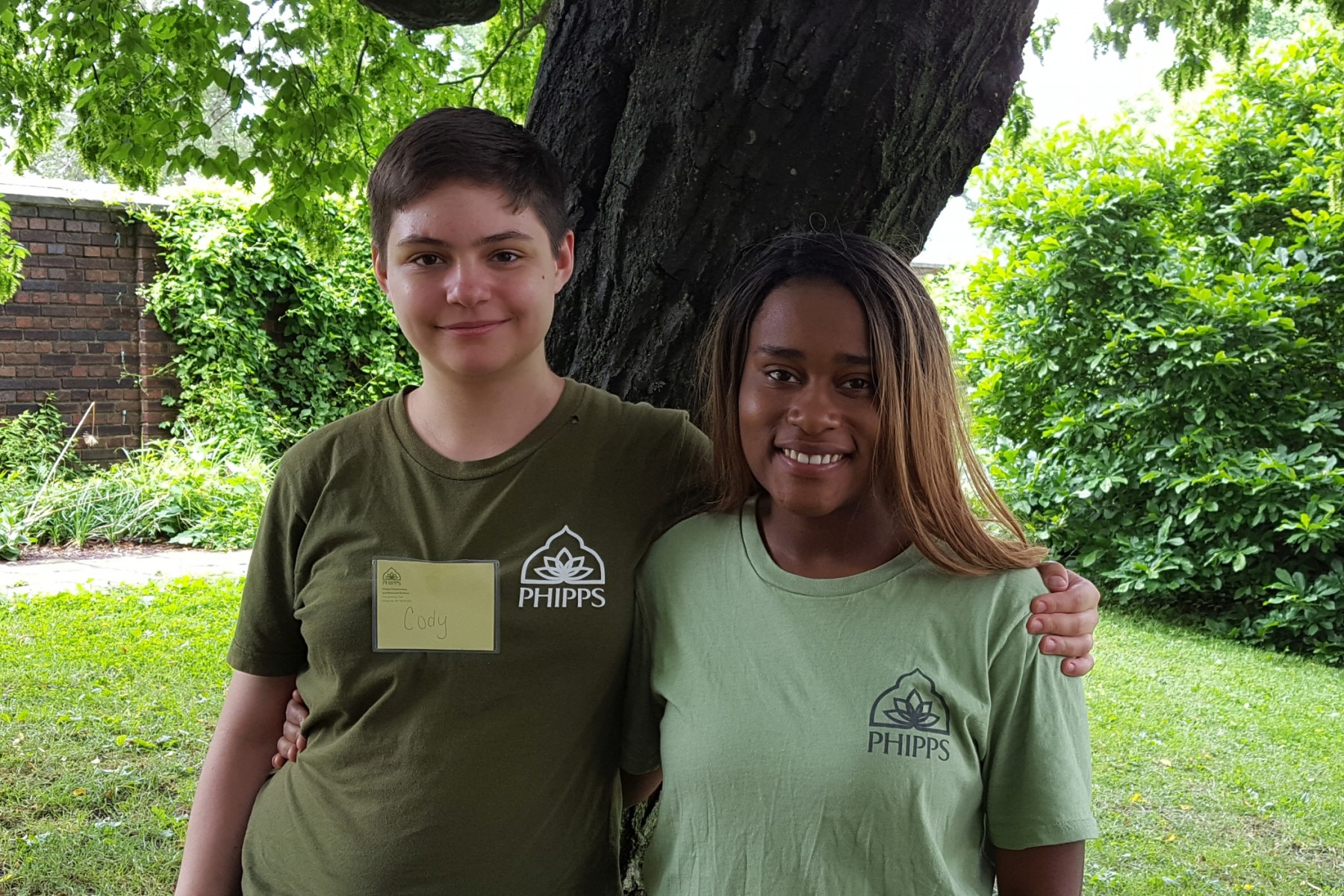Blog

Learning for a Greener Future 2019: Week 3
The Learning for a Greener Future internship is a six-week program offered by Phipps to Pittsburgh-area high school students. Cheyenne Griffin and Cody Jones completed the internship last summer and have returned this year as Intern Leaders. In this blog they will document the interns’ weekly experiences and share their insights and ideas!

Welcome back to the Learning for a Greener Future high school internship blog! We are on our third week, and it's hard to believe that we are already halfway through the internship! On top of that, this week was a short week. We work Monday through Thursday, and Thursday was the Fourth of July, so we had the day off. Despite the short week, our schedules were busy and exciting as ever!
Like last week, we spent Monday morning shadowing the horticulture staff. The horticulturalists are the talented people who take care of Phipps' plants behind the scenes. This week we had one-on one-shadowing. Everyone was assisting in a different way and getting the opportunity to chat with the staff about their backgrounds and knowledge. In the afternoon, our topic of the week, climate change, was introduced. Our program coordinator Emily Johns taught us the basics of climate change and we researched different bioindicators of change happening. We shared our findings with the group and had some meaningful conversations with each other about what climate change means to us and how we feel we can make a difference. After all that serious conversation, we took a nature walk to cap off our day. Emily Horner, a science education facilitator, tagged along. We tried to identify species of bugs and insects and had a great time. This was also another opportunity to take some pictures for our photography show. It was definitely a packed and fun day!
Tuesday marked our second field trip of the internship. We headed out on the bus together to Nine Mile Run in Frick Park. (After lots of sandwich making and bug spraying!) There, we met with Lyndsey-Rose Flowers, who works for Nine Mile Run Watershed Association. We spent our morning pulling out invasive species from the edges of the trail. Invasive species are organisms that don't naturally live in an area. They hinder the growth of native species and decrease the health of an ecosystem. Often, physical removal is one of the only ways to manage invasives without damaging other plants. We pulled species like mugwort, goutweed, bush honeysuckle and multiflora rose. Our well-deserved lunch break was in the shade of a huge sycamore tree by a field. On this trip, the college interns with Phipps also came along, so we got to interact with them. Emily Horner was also back with her bug nets. After lunch, Rose told us some of the history of the run. The stream has always been very polluted. A large reason why is that Pittsburgh has a combined sewer system, so when even 1/10 of an inch of rain falls, raw sewage flows into our waterways. Pieces of garbage could be seen in the bushes and even trees alongside the stream. Then we planted milkweed along the trail. Milkweed is a native perennial plant that is notable for being one of the only foods for monarch butterflies. We headed back on the bus and finished our day with reflection journaling at Phipps. Another hard-working and productive day had come to an end.
The end of our short week was upon us! On Wednesday morning, we began our day with horticulture group shadowing. After lunch, we met up with Dr. Sarah States again to continue our ozone plant damage research. We got more information on how to collect scientific data. Next, Phipps Human Ecologist Katilyn Mascatelli met with us to talk about social and ecological psychology. She gave examples of the research she does for Phipps and explained psychological concepts important to her career. Then it was time to meet with Doug Oster again! Over the past two weeks, we have been taking lots of pictures on our cameras, two of which will ultimately be displayed in a show in Phipps’ Center for Sustainable Landscapes. As a group, we reviewed the photos we have taken.
We’re halfway through the internship and already have learned so much and made new memories as a team. It can only get better from here! Stay tuned for more updates on our internship and experience.
